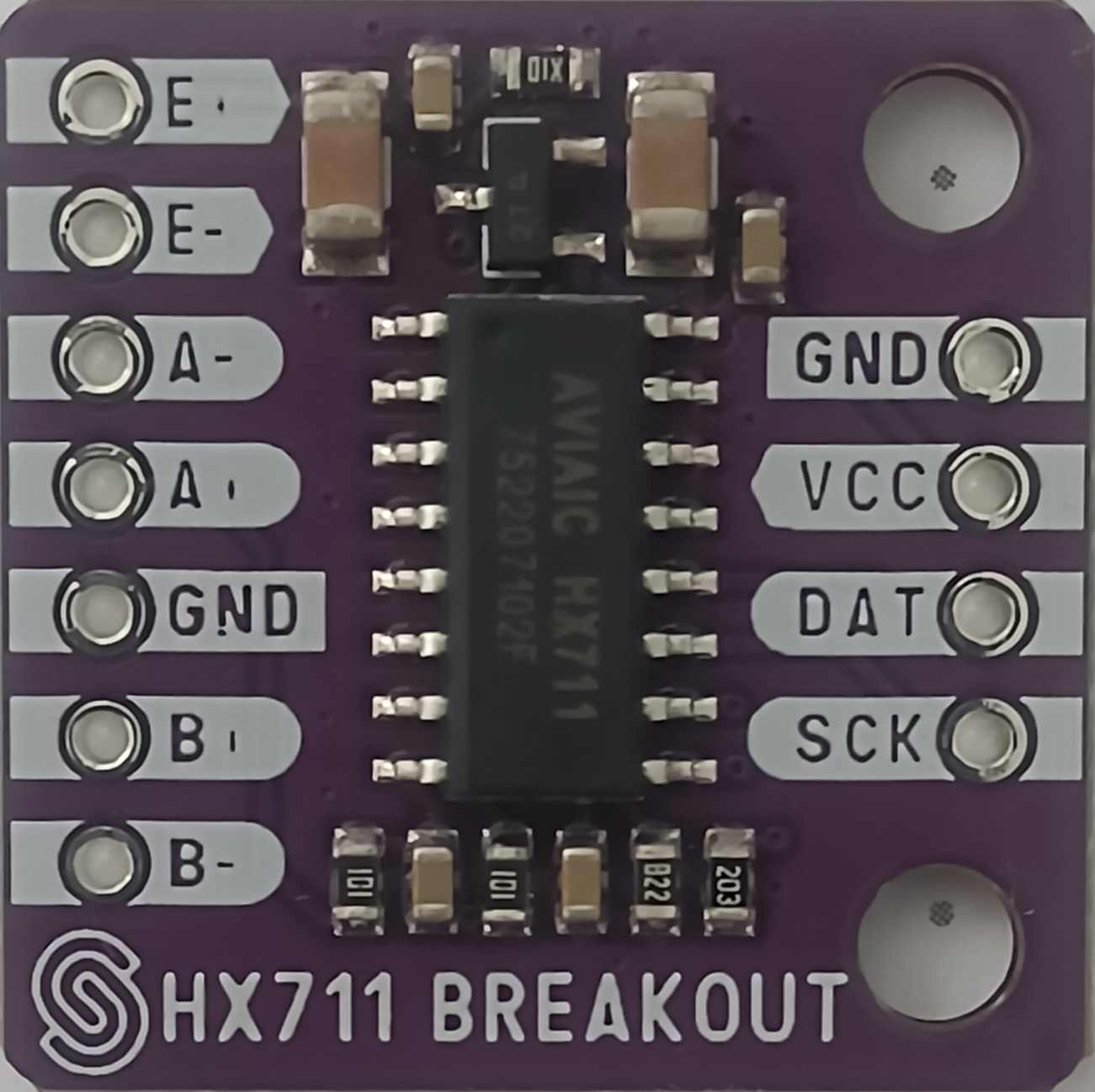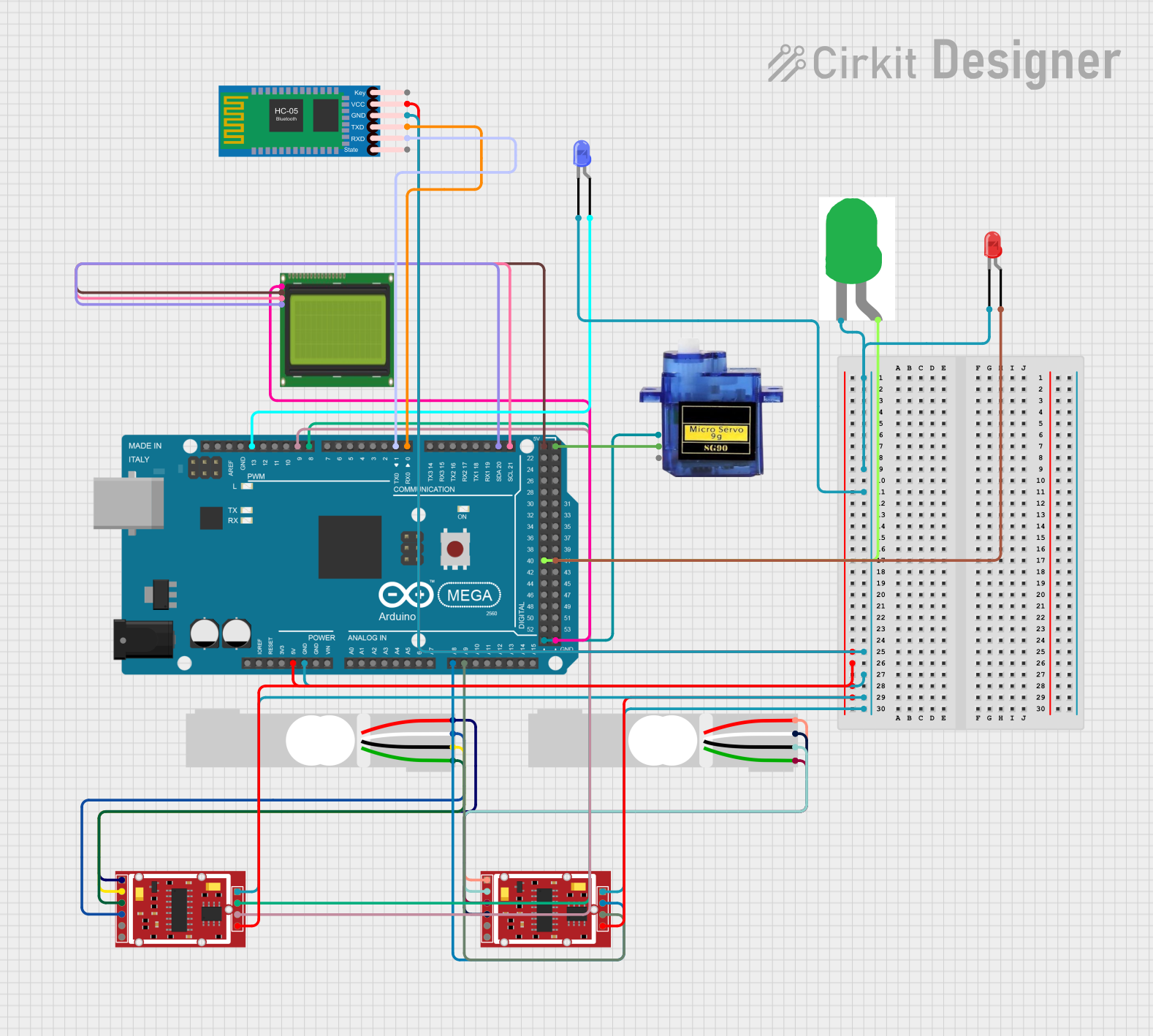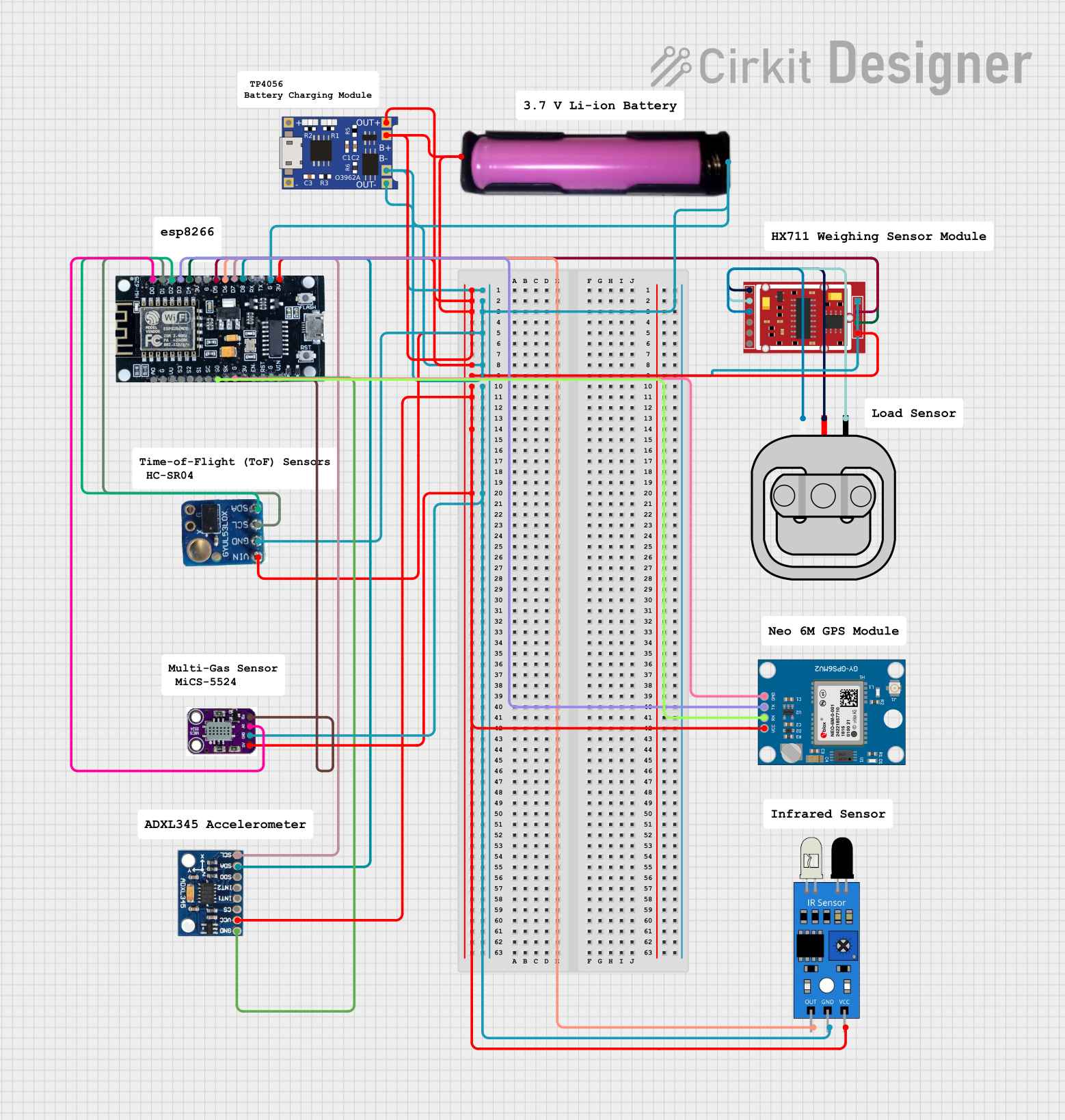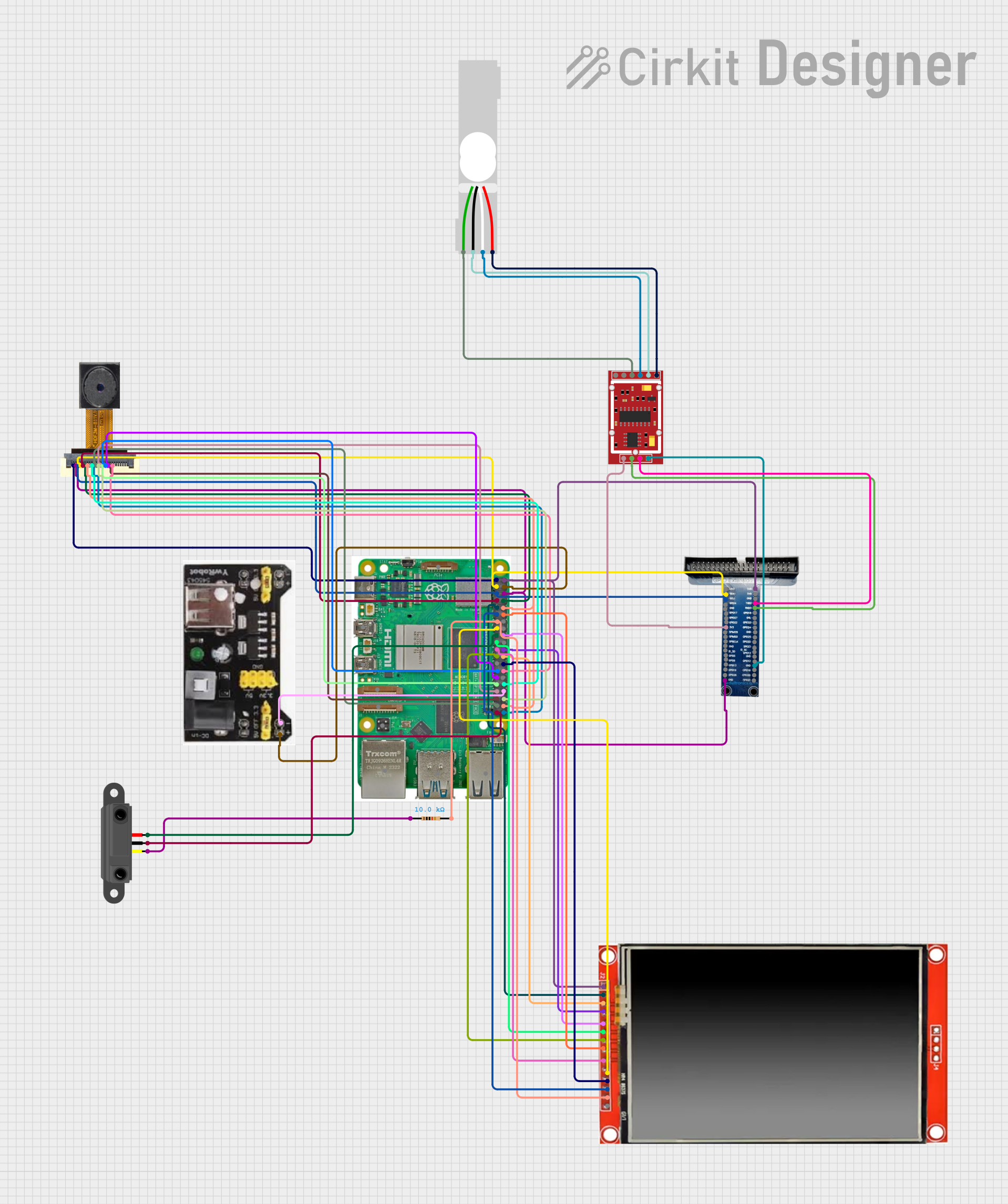
How to Use HX711: Examples, Pinouts, and Specs

 Design with HX711 in Cirkit Designer
Design with HX711 in Cirkit DesignerIntroduction
The HX711 is a precision 24-bit analog-to-digital converter (ADC) designed for applications requiring high accuracy and stability, such as weigh scales and industrial control systems. Manufactured by Soldered, the Soldered HX711 Breakout provides an easy-to-use interface for measuring small changes in voltage, making it ideal for load cells and other sensors.
Explore Projects Built with HX711

 Open Project in Cirkit Designer
Open Project in Cirkit Designer
 Open Project in Cirkit Designer
Open Project in Cirkit Designer
 Open Project in Cirkit Designer
Open Project in Cirkit Designer
 Open Project in Cirkit Designer
Open Project in Cirkit DesignerExplore Projects Built with HX711

 Open Project in Cirkit Designer
Open Project in Cirkit Designer
 Open Project in Cirkit Designer
Open Project in Cirkit Designer
 Open Project in Cirkit Designer
Open Project in Cirkit Designer
 Open Project in Cirkit Designer
Open Project in Cirkit DesignerCommon Applications
- Digital weigh scales
- Industrial process control
- Force measurement systems
- Strain gauge sensors
- IoT-based weight monitoring systems
The HX711 is particularly popular in DIY projects and prototyping due to its simplicity and compatibility with microcontrollers like the Arduino.
Technical Specifications
Key Technical Details
| Parameter | Value |
|---|---|
| Manufacturer | Soldered |
| Part ID | Soldered HX711 Breakout |
| ADC Resolution | 24-bit |
| Operating Voltage | 2.6V to 5.5V |
| Typical Operating Current | ~1.5mA |
| Standby Current | <1µA |
| Input Channels | 2 (Channel A and Channel B) |
| Gain Options | 128 (Channel A), 32 (Channel B) |
| Data Rate | 10 Hz or 80 Hz |
| Communication Protocol | Serial (Clock and Data pins) |
| Operating Temperature | -40°C to +85°C |
Pin Configuration and Descriptions
The Soldered HX711 Breakout has the following pin layout:
| Pin Name | Pin Type | Description |
|---|---|---|
| VCC | Power | Connect to a 2.6V–5.5V power supply. |
| GND | Ground | Connect to the ground of the circuit. |
| DT | Digital I/O | Data output pin for serial communication. |
| SCK | Digital I/O | Clock input pin for serial communication. |
| E+ | Power | Positive excitation voltage for the load cell (connected to VCC). |
| E- | Power | Negative excitation voltage for the load cell (connected to GND). |
| A+ | Analog In | Positive input for Channel A (connect to the load cell signal output). |
| A- | Analog In | Negative input for Channel A (connect to the load cell signal output). |
| B+ | Analog In | Positive input for Channel B (optional secondary input). |
| B- | Analog In | Negative input for Channel B (optional secondary input). |
Usage Instructions
How to Use the HX711 in a Circuit
- Power the HX711: Connect the VCC pin to a 3.3V or 5V power source and the GND pin to the ground.
- Connect the Load Cell:
- Attach the load cell's excitation wires to the E+ and E- pins.
- Connect the load cell's signal wires to the A+ and A- pins (or B+ and B- for Channel B).
- Connect to a Microcontroller:
- Connect the DT pin to a digital input pin on the microcontroller.
- Connect the SCK pin to a digital output pin on the microcontroller.
- Install a Library (if using Arduino):
- Use the "HX711" library available in the Arduino IDE Library Manager for simplified communication.
- Write Code: Use the library to read data from the HX711 and convert it into meaningful weight or force values.
Important Considerations and Best Practices
- Power Supply: Ensure a stable power supply to avoid noise in the ADC readings.
- Load Cell Calibration: Calibrate the load cell to ensure accurate measurements.
- Shielding: Use shielded cables for the load cell to minimize interference.
- Data Rate: Choose the appropriate data rate (10 Hz for higher accuracy, 80 Hz for faster response).
- Pull-up Resistors: The DT and SCK lines may require pull-up resistors depending on the microcontroller.
Example Arduino Code
Below is an example of how to use the HX711 with an Arduino UNO:
#include "HX711.h" // Include the HX711 library
// Define HX711 pins
#define DT_PIN 3 // Data pin connected to Arduino digital pin 3
#define SCK_PIN 2 // Clock pin connected to Arduino digital pin 2
HX711 scale; // Create an instance of the HX711 class
void setup() {
Serial.begin(9600); // Initialize serial communication
scale.begin(DT_PIN, SCK_PIN); // Initialize the HX711 with DT and SCK pins
Serial.println("Calibrating... Place a known weight on the scale.");
scale.set_scale(); // Set the scale to default (no calibration factor)
scale.tare(); // Reset the scale to 0
delay(5000); // Wait for user to place a weight
long known_weight = 100; // Replace with the known weight in grams
scale.set_scale(scale.get_units() / known_weight); // Calibrate the scale
Serial.println("Calibration complete.");
}
void loop() {
// Read and print the weight
float weight = scale.get_units(); // Get the weight in calibrated units
Serial.print("Weight: ");
Serial.print(weight);
Serial.println(" g");
delay(500); // Wait 500ms before the next reading
}
Troubleshooting and FAQs
Common Issues and Solutions
No Data Output:
- Ensure the DT and SCK pins are correctly connected to the microcontroller.
- Verify that the HX711 is powered (check VCC and GND connections).
Unstable Readings:
- Use a stable power supply to reduce noise.
- Shield the load cell wires to minimize electromagnetic interference.
- Check for loose connections in the circuit.
Incorrect Weight Measurements:
- Calibrate the load cell properly using a known weight.
- Verify that the load cell is not overloaded or damaged.
Slow Response Time:
- Increase the data rate to 80 Hz by adjusting the SCK pin timing in the code.
FAQs
Q: Can I use the HX711 with a 3.3V microcontroller?
A: Yes, the HX711 operates at 2.6V–5.5V, making it compatible with both 3.3V and 5V systems.
Q: How do I connect multiple load cells to the HX711?
A: The HX711 supports two channels (A and B). You can connect one load cell to each channel, but note that Channel B has a lower gain (32x) compared to Channel A (128x).
Q: What is the maximum weight the HX711 can measure?
A: The maximum weight depends on the load cell used. The HX711 itself does not impose a weight limit but converts the load cell's output into digital data.
Q: Can I use the HX711 for non-weight-related applications?
A: Yes, the HX711 can measure small voltage changes, making it suitable for other sensors like strain gauges or pressure sensors.
This concludes the documentation for the Soldered HX711 Breakout.